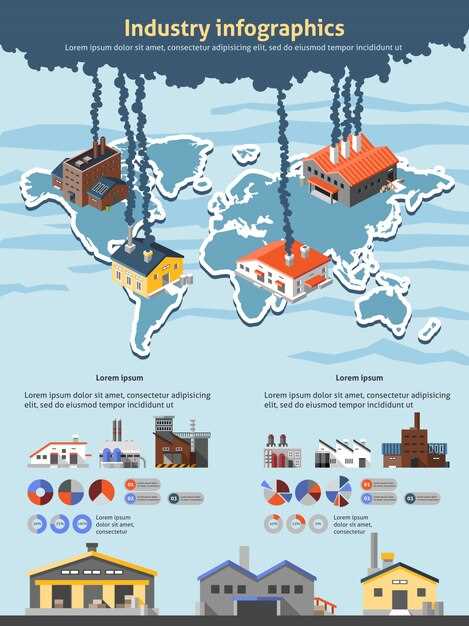Start with a granular risk map that identifies vulnerability across sourcing, transport corridors, inventory levels; implement modular routing, buffer stock at top gateways. A data-driven plan can cut exposure by 20–25% within the first year, with visibility into 80% of above-average delays. This is really about turning data into action.
Diversify across suppliers; carriers; routes; deploy dynamic contracts that price volatility; spend more on data platforms; sensors; contingency logistics. This wont derail profitable margins; targets preserved during extended disruptions.
Ideas became practical when mapped into circuits of visibility; into production calendars, inventory gates; transit windows. Data suggests that minor adjustments yield tangible improvements. Both vendors; carriers; manufacturers benefit; strengthens relationship across industries. However, governance matters: establish clear ownership; thresholds; escalation paths. This is something executives should note. That shift yields exceptional outcomes.
emergent metrics track performance across levels: vendor resilience; transport elasticity; demand shaping. Data from trials suggests that small shifts over cycles reduce failed deliveries by 15–30%. This is something each industry can replicate with a modular toolkit; the relationship remains strong; however only with disciplined data sharing; mutual trust; clear governance. Emergent signals reveal structural fragility in network ecosystems; these insights contribute to resilience planning.
Map weather risk across supplier networks and critical trade routes
Launch a 6-week climate-exposure mapping sprint: build a map for every vendor node; assign a risk score (0–100) using exposure frequency; disruption history; recovery time; tie scores to sourcing decisions, inventory buffers, contingency contracts.
Data to collect: vendor distribution across 24 countries; 12 core corridors; 4 seasonal windows; 6 climate event types (floods, droughts, heatwaves, storms, landslides, cold snaps); track public signals from current feeds, port alerts, insurance claims.
Geography matters: weight exposure by production volume; focus on markets with high profitability; india figures as a top region; ensure local providers signed recovery plans.
Strategy: diversify vendors; diversify routes; secure multi-sourcing; invest in inventory safety stocks; create alternative packaging, transit options.
Technology data sources: dashboards; predictive models; ERP integration; real-time alerts; pull signals from facebook current trend feeds; cloud-based analytics; calibrate models using historical disasters.
Metrics to track: exposure reach; loss-to-production ratio; time-to-resume; capital efficiency; signed responsibilities for procurement heads; impressive improvements in quarterly performance.
With diverse industries, power stability, resources; also current initiatives rise, well; really improving resilience; signed actions accelerate profitable production; most terms prioritize quick recovery; india remains a focus; sloan analytics provide an impressive account of risk signals; disasters arise; challenge remains to shorten response time; time to respond shortens.
Integrate supplier risk data into procurement and logistics decisions
Recommendation: Build a centralized risk hub that ingests supplier metrics from ERP; supplier portals; risk intel feeds; market reports; internal performance history; updates daily; paper trail maintained; open API access.
- Data sources: ERP; supplier portals; risk intel feeds; market reports; internal performance history; updates daily; paper trail maintained; open API access.
- Risk scoring: seven categories; estimated probability; severity scale 0–100; geographic nuance; domestic supplier status; capacity constraints; exposure ranking.
- Decision rules: risk threshold triggers alternative path; reroute material; increase buffer stock; adjust lead times; alert responsible owner via button press; ensure approval if risk high.
- Execution steps: automate alerts; open rerouting tickets; press a single button to apply change; continue monitoring results.
- Governance: ownership by procurement lead; logistics manager; risk analyst; weekly reviews; model recalibration; social responsibility flags; celestial signals monitored.
Analyst inputs include sloan; reeves; weise; goodson to interpret signals; context drawn from russias events; growing capacity concerns; heart of resilience.
Fact: frequency of external signals used for recalibration weekly; year by year volatility rising; seven baseline thresholds inform actions; product planning benefits; paper trail supports audits; open word cloud summarises drivers; celestial cues used for scenario thinking.
Understanding risk drivers remains key; capacity shifts; price volatility; supplier financial stress; regulatory changes drive exposure.
Forecast-driven inventory and capacity planning around weather windows
Recommendation: deploy forecast-driven planning; lock replenishment; capacity deployment to forecast windows; operate on a rolling 12-week horizon; maintain a 2-week lookahead; set service targets above 97%.
Neural forecasts supply window probabilities; inputs include historical precipitation, seasonal temperature, port congestion indices, rail lead times; year-scale training data ensure resilience; expected accuracy gains of 8–12 percentage points versus baseline.
Where risk concentrates, region-specific controls apply: russias hubs require staged capacity; japan routes require buffer for early shipments; forecast signals indicate enough lead time to cover rising demand; identify window signals.
Quadrants framework: 1) supply risk; 2) demand risk; 3) logistics bottlenecks; 4) production constraints. For each quadrant, trigger policies: slower spend; preposition inventory; pre-book capacity.
Reducing spend while preserving service: compress stock levels around high probability windows; deploy multi-echelon inventory optimization; allocate buffers by region; monitor transport capacity.
Explain implementation: created data pipelines; link to ERP; incorporate reeves dataset for cross-check; use sloan benchmarks to calibrate spend; invest quickly.
Investing in forecasting capability is rising: indicate capital spend on sensing; data; people; neural tools yield ROI by reducing stockouts.
Region-specific actions: russias region along with japan operations; identify disruptions quickly; estimated window lengths typical 6–9 days; enough capacity within windows to meet demand.
Metrics: forecast accuracy, window hit rate, stock turn, capacity utilization, spend efficiency; over year period improvements of 15–25% typical; monitor quarterly.
Develop collaborative weather-contingency playbooks with suppliers
Form a cross-functional team with suppliers to co-create weather-contingency playbooks. Define shared risk language, establish 24-hour and 72-hour alert thresholds; assign clear roles for activation; set trigger-based actions.
Map the end-to-end network to identify critical parts; materials; identify emissions-sensitive routes.
Document forecast sources; integrate supplier schedules. Use a shared data schema; track estimated impact on cost, lead times, emissions that matter.
Establish a strategic cadence: quarterly reviews; monthly scenario updates; urgent alerts.
Create a data-sharing stack using systems that integrate forecasts; supplier capacity; inventory buffers.
Embed risk signals from emergent data; therefore adjust playbooks.
Test with swan-event scenarios; use zooniverse datasets as testbeds; include Toshibas; russias as regional references.
Cost tradeoffs require clear metrics; estimated cost impacts; negative emissions risk; bigger strategic resilience.
Within the learning loop, capture results; measure understanding; back team alignment; coffee-break sessions feed feedback; the team wont rely on single-source forecasts.
Track disruption metrics and recovery timelines to guide leadership decisions

Recommendation: deploy a shared disruption dashboard within 24 hours of event onset; track MTTR; downtime hours; capacity utilization; backlog days; on-time delivery rate by product group; data sources: ERP, MES, vendor portal; owners: manufacturing, procurement, finance; also apply fact-driven alerts to trigger escalation; really accelerate responses.
Metric detail: disruption index equals sum of lost capacity by region divided by planned capacity; classify impact into three tiers: minor, moderate, severe; mention black swan risk; compute weekly trend to reveal persistent gaps.
Regional exposure: north, japan; monitor price volatility, power costs, vendor lead times; track capacity gaps by products; growing demand in north markets; risk rises because vendor base concentrated.
Decision triggers: using real-time signals, disruption score surpasses threshold; leadership responds with rapid reallocations; escalate to a focused meeting within 60 minutes; attendees include manufacturing, finance, logistics; ensure cross-border visibility for automotive products; identify potential price shifts.
Forecasting future states: test three scenarios using innovations in scheduling, capacity sharing, external sourcing; measure impact on power costs, prices, overall margin; adapt policies to evolving demand in japan, north markets; harness data to foresee coming shortages.
Recovery timelines: set MTTR target by product group; critical automotive components require faster restoration; track daily delta versus baseline; publish three-day lookahead forecast to strategic leadership group; measure effect on result.
Governance: sloan-led analytics hub; working hypothesis drives policy updates; weekly sprint reviews; publish updates on facebook; align leadership priorities; create a clear ownership map; capture nature of disruptions; root-cause tracking.

 Steering Trade and Supply Chains Through Weather Challenges">
Steering Trade and Supply Chains Through Weather Challenges">
